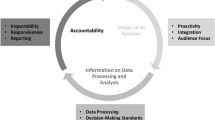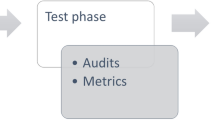Abstract
The need to manage embedded systems, brought forward by the wider adoption of pervasive computing, is particularly vital in the context of secure and safety-critical applications. Technology infiltrates in ordinary things, hitching intelligence and materializing smart systems. Each of these individual entities monitors a specific set of parameters and deduces a constrained local view of the surrounding environment. Many distributed devices exchange information in order to infer the real system state and achieve a consistent global view. However, conflicts may arise due to the integration of deficit pieces of local knowledge. Robust and efficient conflict resolution is essential, especial in cases of emergency where the system must contribute with timely and accurate data to the overall crisis management operation. In this paper, we present AmbISPDM – a formal framework for the management of embedded systems with a coherent conflict resolution mechanism. The process is implemented as a software agent’s reasoning behaviour and applied in the multi-agent domain. As a proof of concept, a smart university campus setting is deployed, with agents controlling embedded devices to assist living conditions in normal operation and the evacuation planning in case of fire.





Similar content being viewed by others
Notes
JADE Framework: http://jade.tilab.com/
ROBO science group: www.robocuprescue.org
FIPA: http://www.fipa.org/
OSGi Alliance: http://www.osgi.org/
Makewave, Knopflerfish: http://www.knopflerfish.org/
WS4D.org, WS4D-JMEDS DPWS Stack: http://sourceforge.net/projects/ws4d-javame/
National Fire Protection Association (NFPA): http://www.nfpa.org/public-education/by-topic/property-type-and-vehicles/campus-and-dorm-fires
Kaggle Datasets: https://www.kaggle.com/mikaelhuss/swedish-school-fires
BeagleBone.org, BeagleBone device manual: http://beagleboard.org/static/beaglebone/a3/Docs/Hardware/BONE_SRM.pdf
References
Fysarakis K, Hatzivasilis G, Rantos K, Papanikolaou A, Manifavas C (2014) Embedded systems security challenges. In: Measurable security for embedded computing and communication systems (MeSeCCS). Lisbon, pp 1–10
Sharpanskykh A, Haest R (2016) An agent-based model to study compliance with safety regulations at an airline ground service organization. Appl Intell Springer 45(3):881–903
Levy-Bencheton C, Darra E, Tetu G, Dufay G, Alattar M (2015) Security and resilience of smart home environments – Good practices and recommendations. ENISA
Hatzivasilis G, Floros G, Papaefstathiou I, Manifavas C (2016) Lightweight authenticated encryption for embedded on-chip systems. Information Security Journal: A Global Perspective. Taylor & Francis 25(4-6):151–161
Hatzivasilis G, Papaefstathiou I, Manifavas C, Askoxylakis I (2015) Lightweight password hashing scheme for embedded systems. In: 9th WG 11.2 international conference on information security theory and practice (WISTP), IFIP, vol 9311. Springer, LNCS, Heraklion, pp 249–259
Papaefstathiou I, Bilanakos A, Fysarakis K, Hatzivasilis G, Manifavas C (2014) An efficient anti-malware intrusion detection system implementation exploiting GPUs. In: International conference on advanced technology & sciences (ICAT 2014). Antalya, pp 1–9
Hatzivasilis G, Papaefstathiou I, Askoxylakis I, Fysarakis K (2017) SecRoute: end-to-end secure communications for wireless Ad-hoc networks. In: 22nd IEEE symposium on computers and communications (ISCC 2017). IEEE, Heraklion, pp 1–6
Hatzivasilis G, Papaefstathiou I, Manifavas C (2014) ModconTR: a modular and configurable trust and reputation-based system for secure routing. In: 11th ACS/IEEE international conference on computer systems and applications (AICCSA). IEEE, Doha, pp 56–63
Muller ET (2015) Commonsense reasoning: an event calculus based approach, 2nd edn. M. Kaufmann
Patkos T, Plexousakis D DECKT: Epistemic reasoning for ambient intelligence. In: ERCIM news magazine – special theme: intelligent and cognitive systems, vol 2011, no 84, pp 1–30
Hatzivasilis G, Papaefstathiou I, Manifavas C, Papadakis N (2014) A reasoning system for composition verification and security validation. In: 6th international conference on new technologies, mobility and security (NTMS). IEEE, Dubai, pp 1–4
Olaru A, Gratie C (2011) Agent-based, context-aware information sharing for ambient intelligence. Int J Artif Intell Tools, World Scientific 20(6):985–1000
Manifavas C, Fysarakis K, Rantos K, Hatzivasilis G (2014) DSAPE–dynamic security awareness program evaluation. In: 2nd international conference on human aspects of information security, privacy, and trust (HCI International), vol 8533. Springer, LNCS, Heraklion, pp 258–269
Khali KM, Abdel-Aziz M, Nazmy TT, Salem ABM (2013) Intelligent techniques for resolving conflicts of knowledge in multi-agent decision support systems. In: International conference on intelligent computing & information systems (ICICIS). Cairo, pp 235–239
Garagnani M, Fox M, Long DP (1998) Belief systems for conflict resolution. In: 13th European conference on AI (ECAI) – workshop on conflicts among agents. Brighton, pp 55–60
Darnon C, Buchs C, Butera F (2002) Epistemic and relational conflicts in sharing identical vs. complementary information during cooperative learning. Swiss J Psychol, Hogrefe AG 61(3):139–151
Bikakis A, Antoniou G (2008) Distributed reasoning with conflicts in an ambient peer-to-peer setting. In: Constructing ambient intelligence: ami 2007 workshops, vol 11. Darmstadt, Springer, CCIS, pp 24–33
Yong-Xin Z, Qing-Zhong L, Zhao-Hui P (2013) A novel method for data conflict resolution using multiple rules. Computer Science and Information Systems, ComSIS Consortium 10(1):215–235
Lempp F (2016) A logic-based model for resolving conflicts. Int J Confl Manag Emerald 27(1):116–139
Fahad M, Boissier O, Maret P, Moalla N, Gravier C (2014) Smart places: multi-agent based smart mobile virtual community management system. Appl Intell, Springer 41(4):1024–1042
Rao AS, Georgeff MP (1995) BDI agents: from theory to practice. In: 1st international conference on multi-agent systems (ICMAS). The MIT Press, California, pp 312–319
Kaluza B, Cvetkovic B, Dovgan E, Gjoreski H, Gams M, Lustrek M (2014) A multi-agent care system to support independent living. Int J Artif Intell Tools World Scientific 23(1):30. 1440001
Garcia-Herranz M, Alaman X, Haya PA (2010) Easing the smart home: a rule-based language and multi-agent structure for end user development in intelligent environments. J Ambient Intell Smart Environ IOS Press 2(4):437–438
Semmel G, Davis S, Leucht K, Rowe D, Kelly A, Boloni L (2005) Launch commit criteria monitoring agent. In: 4th international joint conference on autonomous agents and multiagent systems (AAMAS). ACM Press, Utrecht, pp 3–10
Aschwanden P, Baskaran V, Bernardini S, Fry C, R-Moreno MD, Muscettola N, Plaunt C, Rijsman D, Tompkins P (2006) Model-Unified Planning and execution for distributed autonomous system control. In: American association for artificial intelligence (AAAI) 2006 Fall Symposia. Washington DC
Sislak D, Pechoucek M, Volf P, Pavlicek D, Samek J, Marik V, Losiewicz P (2008) AGENTFLY: Towards multi-agent technology in free flight air traffic control. In: Defence industry application of autonomous agents and multi-agent systems. Springer , pp 73–96
Faical BS, Pessin G, Filho GPR, Carvalho ACPLF, Gomes PH, Ueyama J (2016) Fine-tuning of UAV control rules for spraying pesticides on crop fields: an approach for dynamic environments. Int J Artif Intell Tools World Scientific 25(1):19. 1660003
McKean J, Shorter H, Luck M, McBurney P, Willmott S (2008) Technology diffusion: analysing the diffusion of agent technologies. Auton Agent Multi-Agent Syst Springer 17(3):372–396
Bergenti F, Vargiu E (2010) Multi-agent systems in the industry. Three notable cases in Italy. In: CEUR workshop proceedings 11th workshop from objects to agents (WOA), vol 621. Rimini, pp 1–6
Pechoucek M, Marik V (2008) Industrial deployment of multi-agent technologies: review and selected case studies. Auton Agent Multi-Agent Syst Springer 17(3):397–431
Balasubramanian V, Massaguer D, Mehrotra S, Venkatasubramanian N (2006) DrillSim: a simulation framework for emergency response drills. In: 4th IEEE international conference on intelligence and security informatics (ISI), vol 3975. Springer, LNCS, California, pp 237–248
Schurr N, Marecki J, Lewis JP, Tambe M, Scerri P (2005) The Defacto system: coordinating human-agent teams for the future of disaster response. Multi-Agent Programming, Springer, series of Multiagent Systems, Artificial Societies, and Simulated Organizations, vol 15, part III, pp 197–215
Adams NM, Field M, Gelenbe E, Hand DJ, Jennings NR, Leslie DS, Nicholson D, Ramchurn SD, Roberts SJ, Rogers A (2008) The Aladdin project: intelligent agents for disaster management. In: IARP/EURON workshop on robotics for risky interventions and environmental surveillance (RISE). Benicassim
Cardoso RC, Bordini RH (2016) A distributed online multi-agent planning system. In: 26th international conference on automated planning and scheduling(ICAPS) proceedings of the 4th workshop on distributed and multi-agent planning (DMAP). London , pp 15–23
Hatzivasilis G, Papaefstathiou I, Manifavas C (2017) Real-time management of railway CPS. In: 5th EUROMICRO/IEEE workshop on embedded and cyber-physical systems (ECYPS 2017). IEEE, Bar, pp 1–4
Fysarakis K, Hatzivasilis G, Papaefstathiou I, Manifavas C (2016) RtVMF – a secure real-time vehicle management framework with critical incident response. IEEE Pers Commun Mag (PVC) – Special issue on Smart Vehicle Spaces, IEEE 15(1):22–30
Fysarakis K, Hatzivasilis G, Askoxylakis IG, Manifavas C (2015) RT-SPDM: real-time security, privacy & dependability management of heterogeneous systems. In: 3rd international conference on human aspects of information security, privacy, and trust (HCI International), vol 9190. Springer, LNCS, California, pp 619–630
Hatzivasilis G (2011) Multi-agent distributed epistemic reasoning in ambient intelligence environments. Master thesis, University of Crete, Department of Computer Science, FORTH Institute of Computer Science, Heraklion, Crete, Greece, code 000370769, pages 88
Hatzivasilis G, Papaefstathiou I, Manifavas C (2016) Software security, privacy and dependability: metrics and measurement. IEEE Softw 33(4):46–54
Guha S, Daswani N, Jain R (2006) An experimental study of the Skype peer-to-peer voIP system. In: 5th international workshop on peer-to-peer systems (IPTPS 2006), California, pp 1–6
Lawrence K, Kaler C, Nadalin A, Monzilo R, Hallam-Baker P (2006) Web services security: SOAP message security 1.1. OASIS standard specification, pp 1–76, available at: https://www.oasisopen.org/committees/download.php/16790/wss-v1.1-spec-os-SOAPMessageSecurity.pdf
Rantos K, Fysarakis K, Manifavas C, Askoxylakis I (2015) Policy-controlled authenticated access to LLN-connected healthcare resources. IEEE Syst J PP(99):1–11
Parducci B, Lockhart H (2013) Extensible access control markup language (XACML) version 3.0. OASIS Standard, pp 1–154
Thirumalainambi R (2007) Pitfalls of JESS for dynamic systems. In: International conference on artificial intelligence and pattern recognition (AIPR), vol 1. ISRST, Florida, pp 491–494
Fysarakis K, Soultatos O, Askoxylakis I, Manifavas H, Papaefstathiou I, Katos V (2016) Which IoT protocol? Comparing standardized approaches over a common M2M application. In: IEEE global communications conference (GLOBECOM). IEEE, Washington DC, pp 1–6
Kravari K, Bassiliades N (2015) A survey of agent platforms. Journal of Artificial Societies and Social Simulation (JASSS) 18(1):11–29
Jarrar M, Heymans S (2008) Towards pattern-based reasoning for friendly ontology debugging. Int J Artif Intell Tools World Scientific 17(4):607–634
Shimony SE, Nissan E (2001) Kappa calculus and evidential strength: A note on Aqvist’s logical theory of legal evidence. Artif Intell Law Springer 9(2):153–163
Deng Y (2015) Generalized evidence theory. Appl Intell Springer 43(3):530–543
Khalil KM, Abdel-Aziz M, Nazmy TT, Salem A-BM (2009) Bridging the gap between crisis response operations and systems. Annals of the University of Craiova, pp 1–6
Acknowledgements
This work was funded by the General Secretarial Research and Technology (G.S.R.T.), Hellas under the Artemis JU research program nSHIELD (new embedded Systems arcHItecturE for multi-Layer Dependable solutions) project. Call: ARTEMIS-2010-1, Grand Agreement No: 269317.
Author information
Authors and Affiliations
Corresponding author
Rights and permissions
About this article
Cite this article
Hatzivasilis, G., Papaefstathiou, I., Plexousakis, D. et al. AmbISPDM. Appl Intell 48, 1623–1643 (2018). https://doi.org/10.1007/s10489-017-1030-0
Published:
Issue Date:
DOI: https://doi.org/10.1007/s10489-017-1030-0




